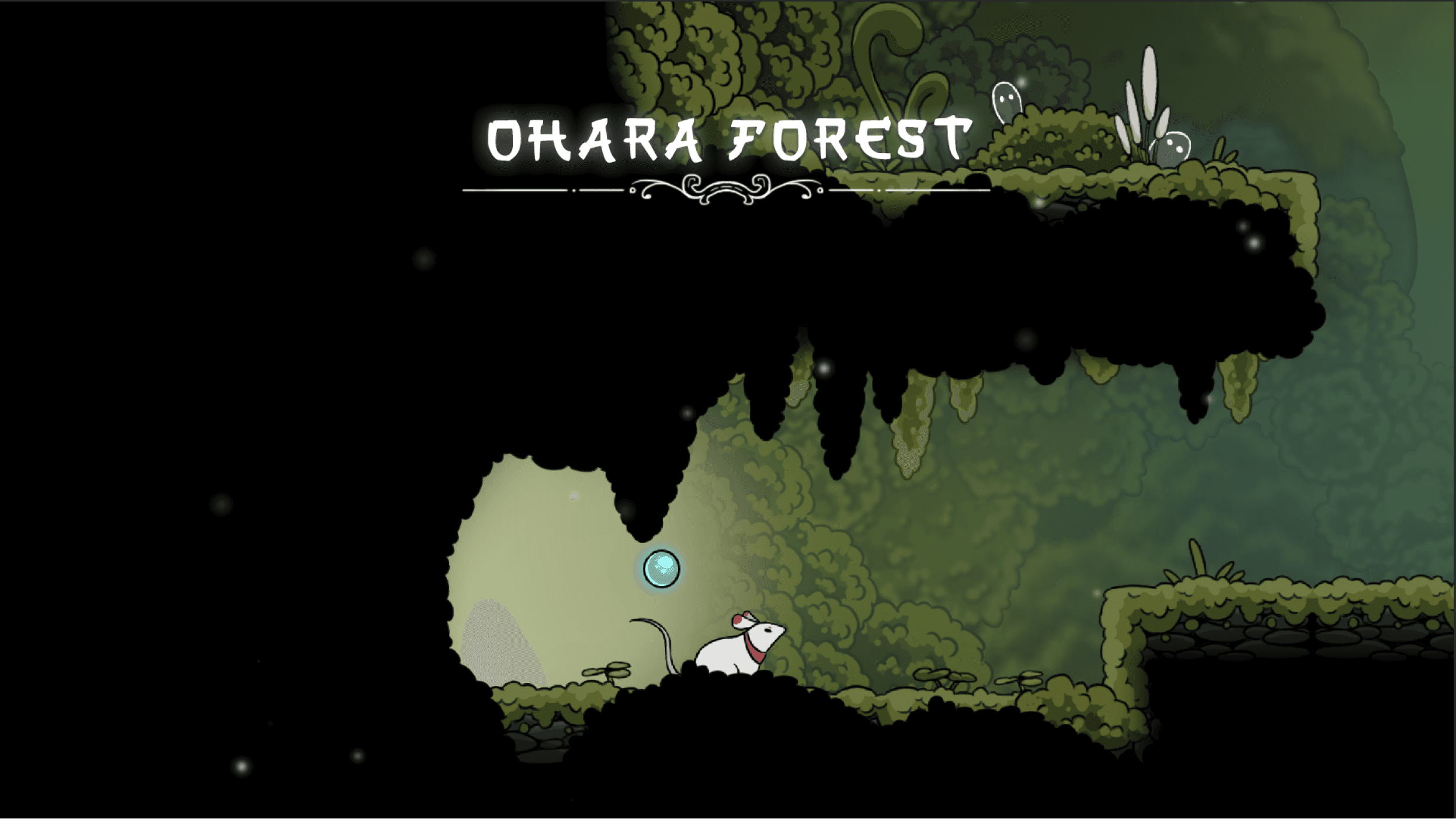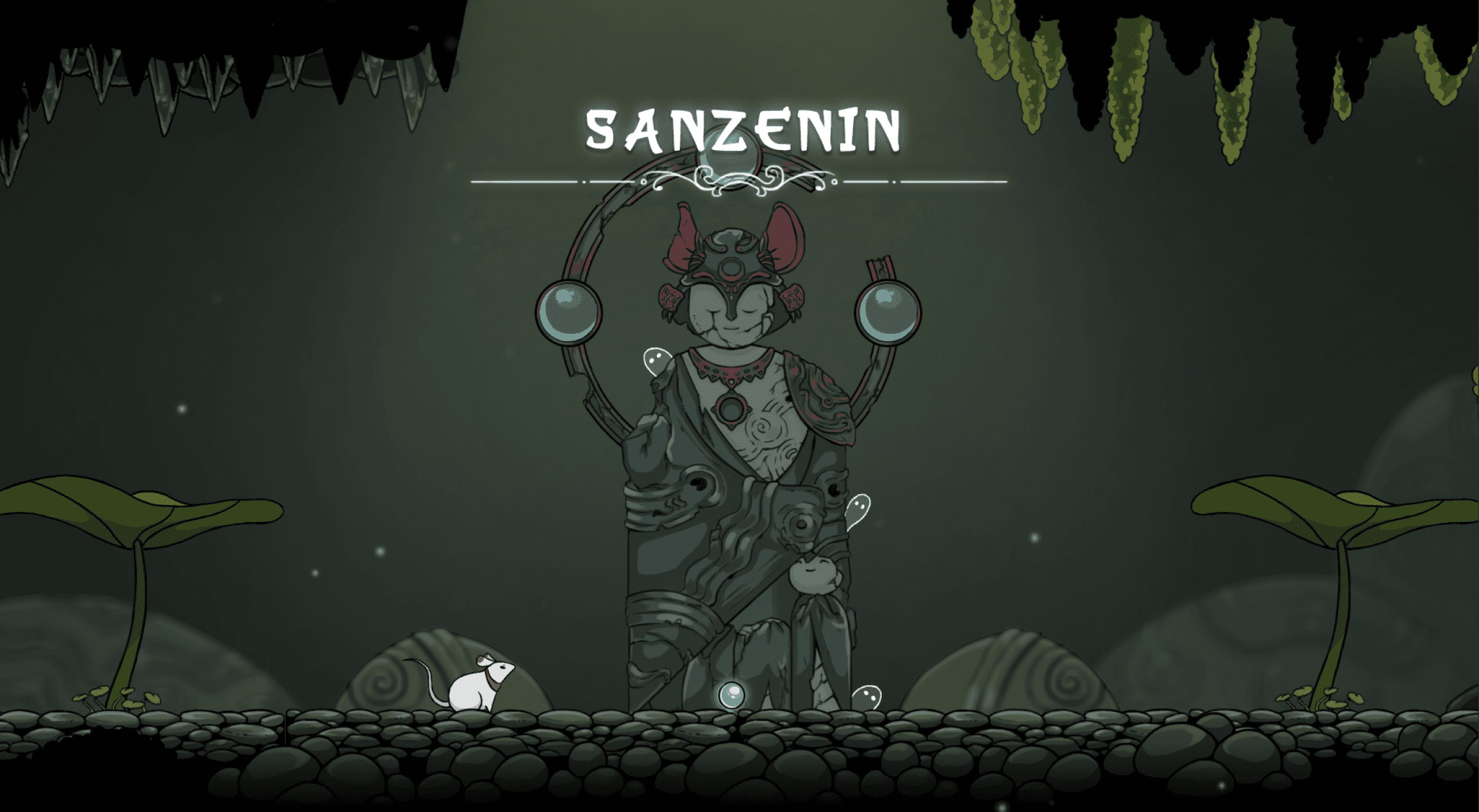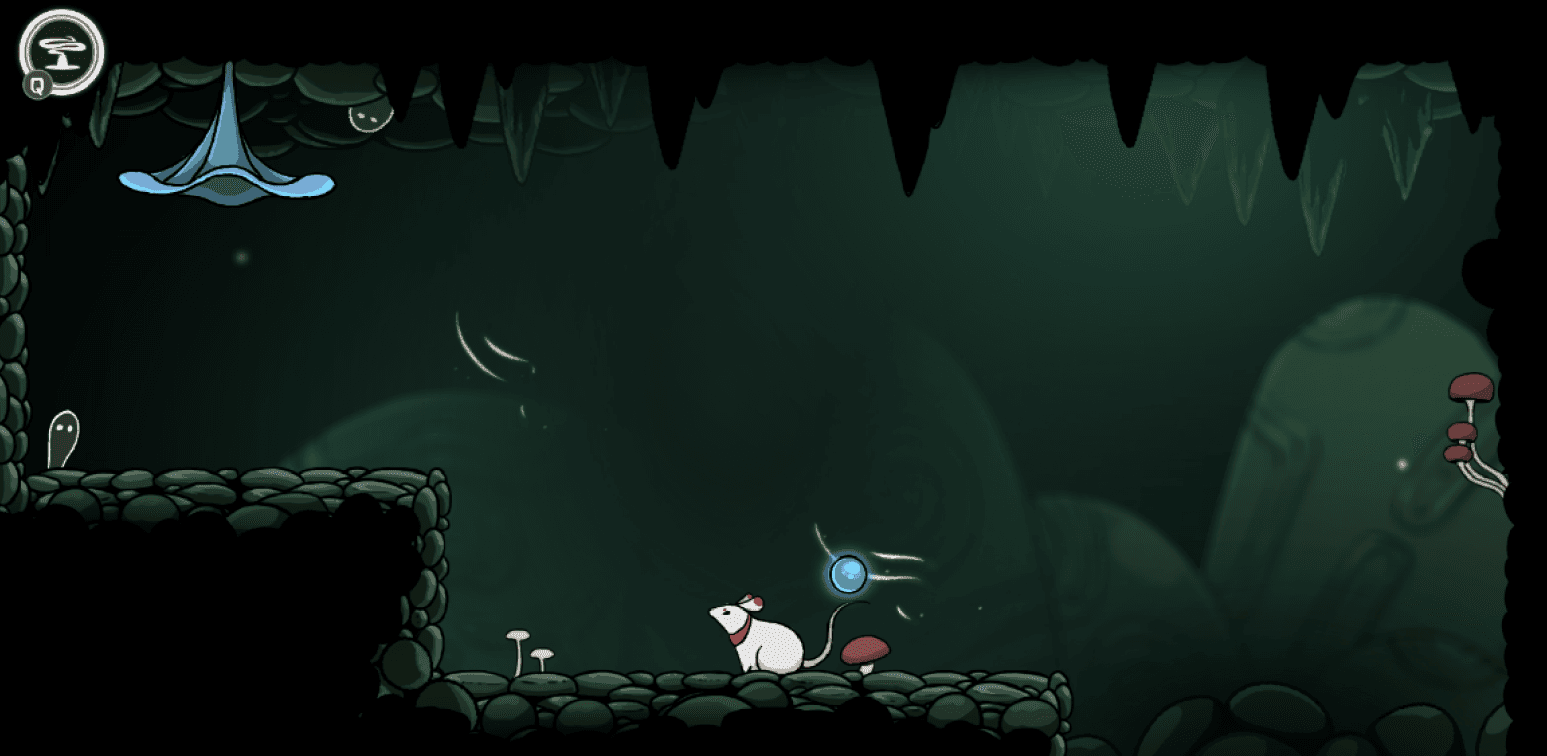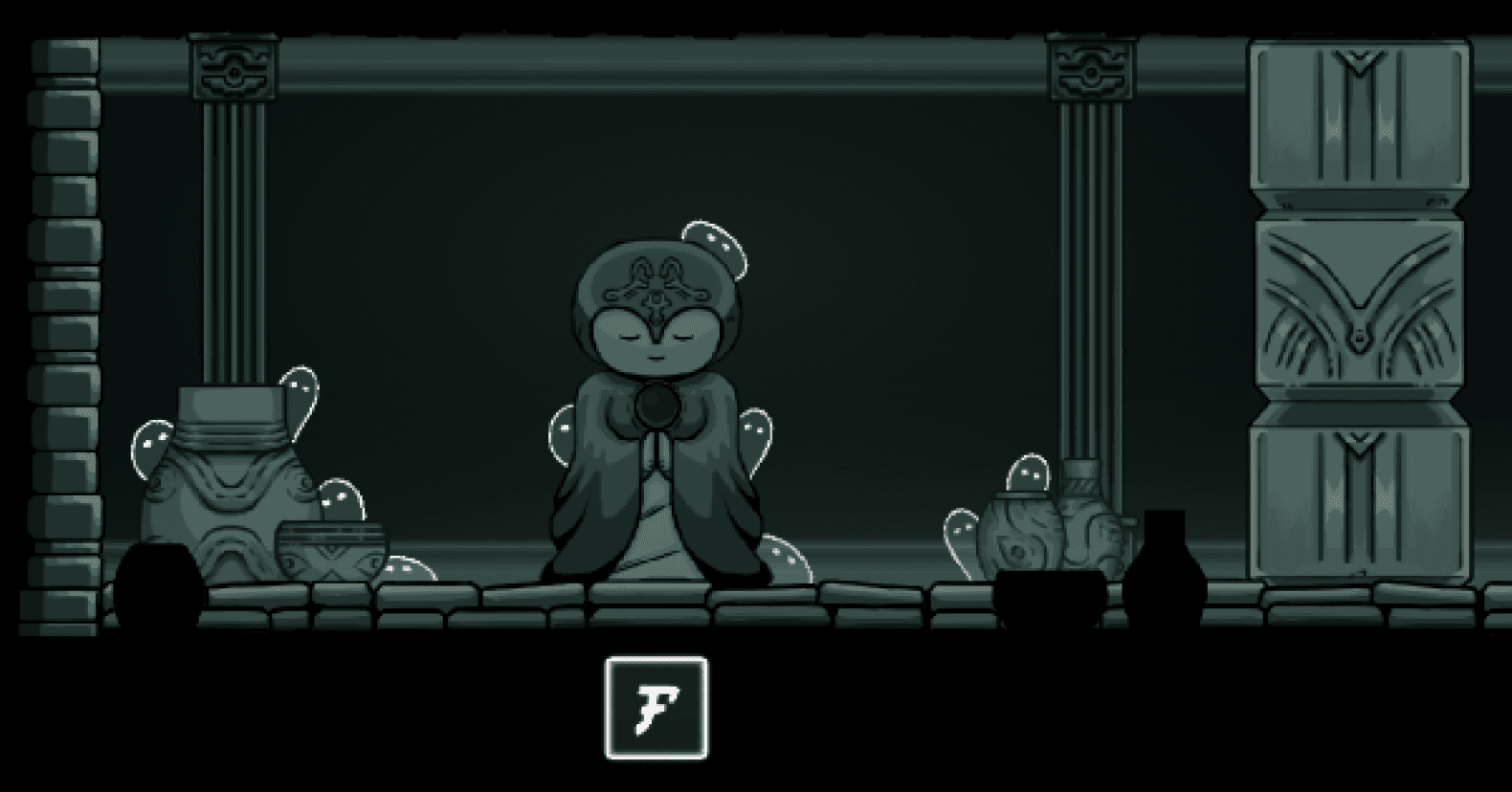Student Project for UXG2400 & UXG2450 – Project 2
SENSE
Bearing witness to the despairing loss of his old God friend, Zumi was overwhelmed by grief. Amidst the situation that a mysterious orb appears before Zumi and sent him on a journey to find the lost spirits.
Embark on this heartwarming tale as Zumi discovers hidden secrets and gifts left behind by his friend. Will Zumi be able to fulfil the void that was left behind?
Available on Digipen Games Gallery
The Concept
Sense is a linear 2D puzzle platformer where players navigate through a series of levels to unlock the 3 enhanced senses - Smell, Sight and Hearing.
The mechanic for each sense is tailored to be almost identical to how each sense would function in reality. For instance, enhanced sense of Smell reveals scent trails that can lead players to hidden rooms in the levels.
My Contributions
Team Size of 8
Role: Design Lead & Level Design Champion
Ensured that the overall direction and creative vision of the game are feasible within an 8-month timeframe.
Established the core game loop.
Designed all of the puzzles in the game.
Planned the design roadmap for all milestones.
Designed and implemented the levels onto GameSense 2D (Custom Engine).
Assisted in basic gameplay coding.
Assisted in integrating art assets.
Arranged playtest sessions to garner feedback for improvement.
Softwares Used
Design Process
Theme Makes the Team Work
Settling on a theme in the early stages of development is critical. It provides a clear breakdown of the required assets and helps to layer and gel several mechanics and level features together. Additionally, properly set themes can make the level look more cohesive and not out of place.

During the Alpha milestone, we settled on the number of levels we planned to have and the corresponding themes to integrate. This helped us decide which sense and what unique asset should be the most prominent in a level.
For example:
Forest Theme = Sense of Smell + Lilypads
Cave Theme = Sense of Sight + Bouncy Mushrooms
Ruins Theme = Sense of Hearing + Singing Spirits


Ultimately, we want to create an unforgettable experience for the players. Thus, through combining the unique assets with the tilesets and blockouts, we give the levels different identities that the players can notice and remember. This is good as it can imprint the various iconic moments on the players better.
Furthermore, we can centre the level’s mechanics around the unique assets. For instance, in the lilypad and bouncy mushroom levels, they have to use these assets to navigate around the level. And as for the bell, it is part of the hearing puzzle that the player needs to clear to unlock a gate. Therefore, the players can be conditioned to associate the Singing Spirits with puzzles, and they will need to activate their Sense of Hearing when they hear them.
The Learning Journey
Camera Magic
Implementing dynamic camera movements in a level is extremely vital. From a player’s perspective, the game world feels much more responsive and alive. As a designer, I could also use camera movements to draw the players’ focus to a specific point, especially if it's a diegetic element.
Before adjusting the camera, the player can't see what is beyond the lily pad, which creates a sense of uncertainty and can make it hard for players to understand.
After making camera adjustments, this new camera space hints to the player on how to get across strategically and proceed ahead.
Pairing the camera works with visual, spatial and audio cues, I could also use it to draw the players' attention to other elements in the game, like the murals, to indirectly highlight its importance. This allows me to create “Wait, what’s that?!” moments for my play,ers thu, creating a more immersive and engaging experience in the levels.
Gallery
Let’s work together!
For work inquires feel free to get in touch with me
Singapore
tohpshn1@gmail.com















